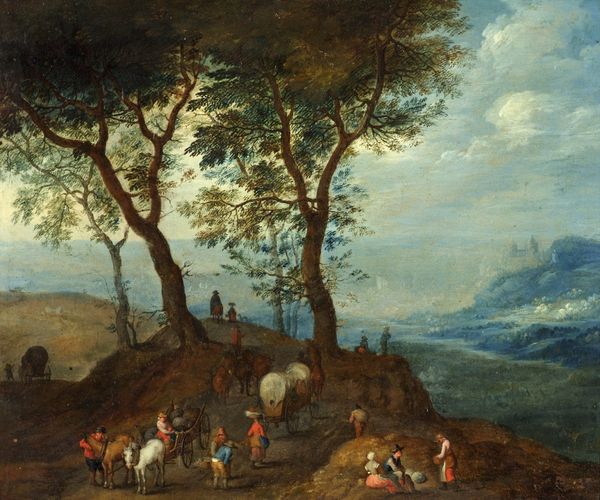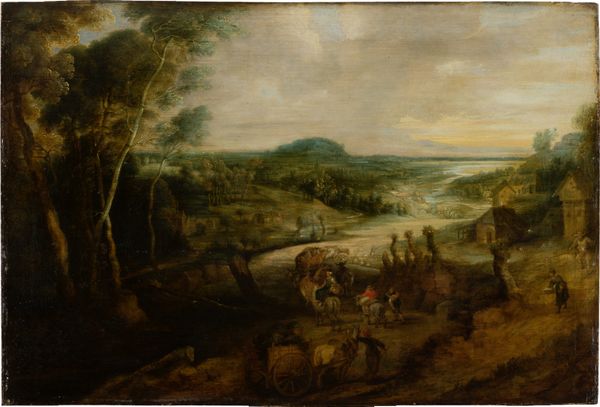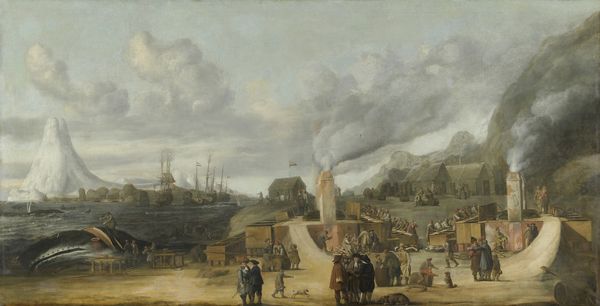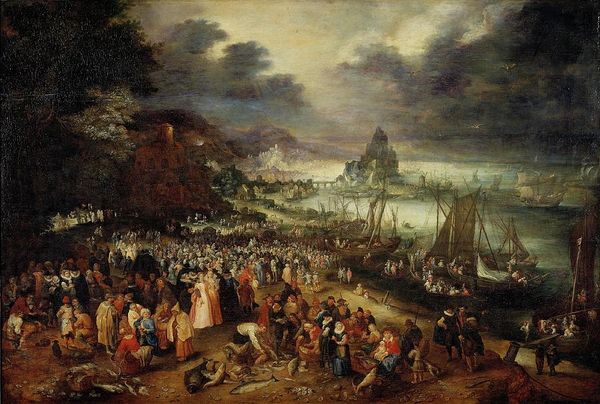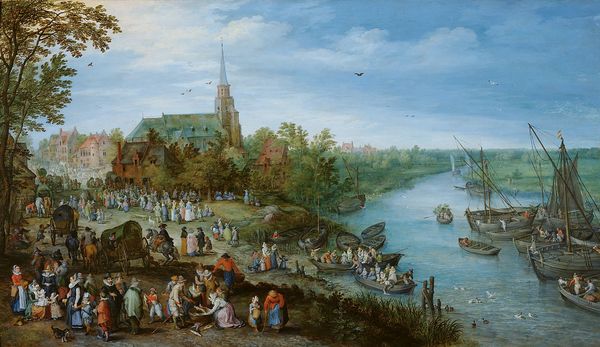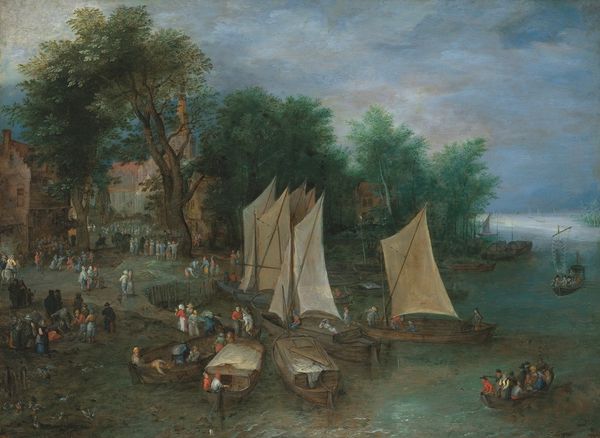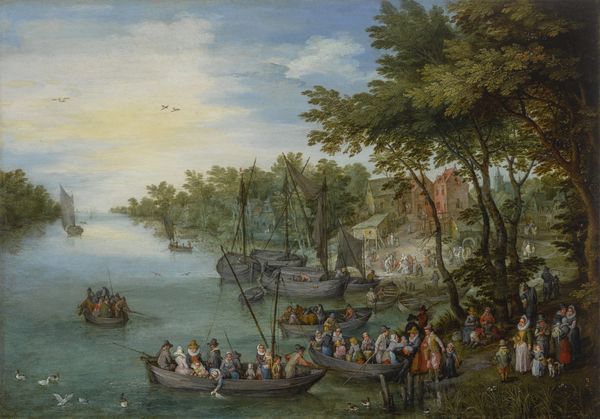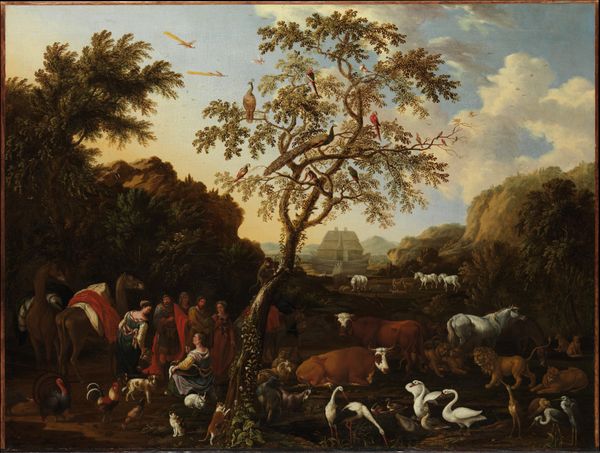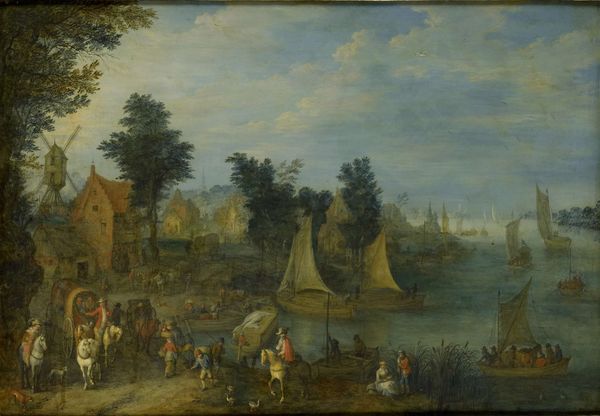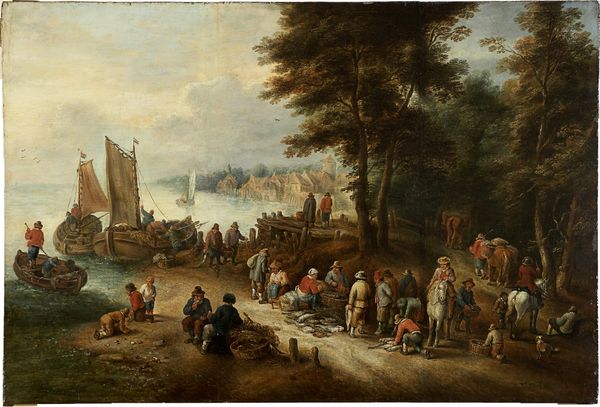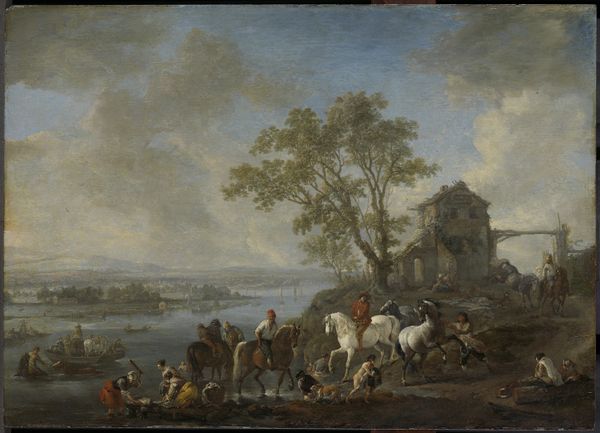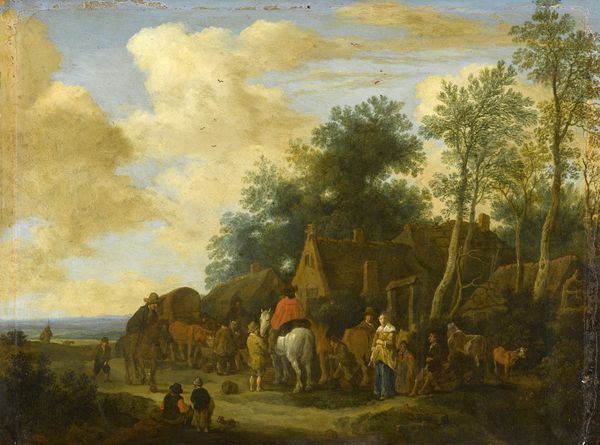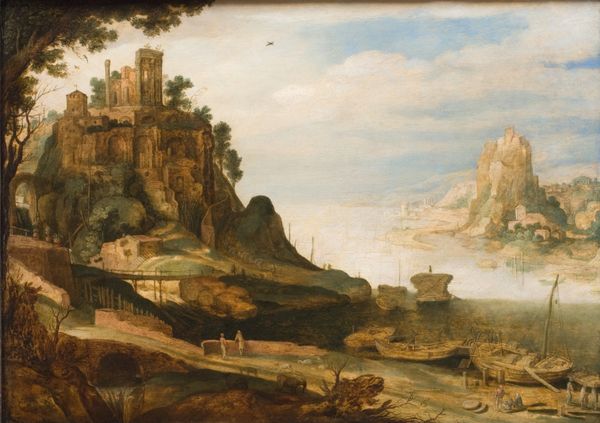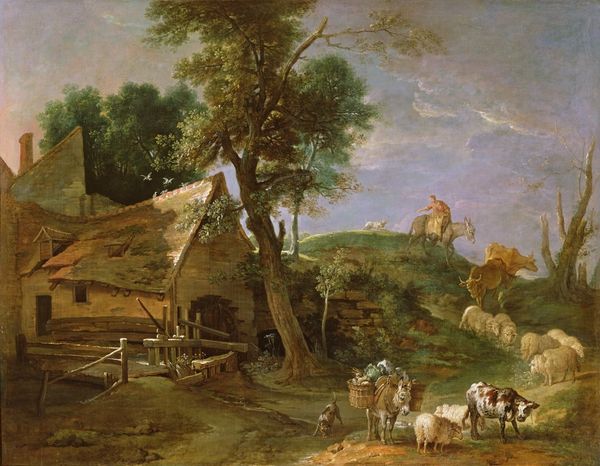
Fish Market (Calling the Apostoles Peter and Andrew) 1608
0:00
0:00
oil-paint
#
baroque
#
oil-paint
#
landscape
#
oil painting
#
cityscape
#
genre-painting
Copyright: Public domain
Curator: Well, I’m immediately struck by the light in this oil painting—it gives everything a sense of somber theatricality. Editor: That’s a fascinating observation. You're looking at "Fish Market (Calling the Apostles Peter and Andrew)" painted around 1608 by Jan Brueghel the Elder. What’s so interesting is how Brueghel layers these religious and genre painting themes into one comprehensive critique about 17th century mercantile practices. Curator: Ah, mercantile practices, I agree, what we see is the distribution process of consumable goods and perhaps their global impact as the backdrop provides insight regarding access, class and community engagement? Look how the activity of the harbor interacts with a community gathering for work in distribution or as purchasers? The brushstrokes bring movement and provide attention to material textures, it is alive with interaction and industry! Editor: Exactly! Think about it: Brueghel is taking what’s essentially a Biblical story—the moment Jesus calls Peter and Andrew to become his apostles—and he’s setting it in this bustling, almost chaotic, fish market scene. So we must examine the intersections between economic imperatives and social stratifications present at the time. There’s a real commentary here on religion, social class, the poor, who may be relying on cast offs from trade—the global exchange as it perpetuates itself—all under this one visual plane. Curator: It really begs the question—is it “art” when considering the time it takes for labor intensive work such as this to even dry? How do we then classify these elements of time, technique, skill when we see all the elements converging in a still moment of expression that represents real time? What happens between point A of the process, to when someone deems it art. Fascinating... Editor: Absolutely! It raises critical questions about artistic production and representation. And when we remember Brueghel painted this during a time of enormous social upheaval, particularly around labor and social roles...the painting pushes back to reclaim identities, highlighting complex exchanges across culture that go beyond surface appearances and traditional categorization. Curator: Looking at this piece really reveals how different elements like commerce, and artistry become co-constitutive, shaping our perceptions of history, meaning, and value. Editor: Yes! The artist confronts those ideas with the daily lives of people negotiating religion, market, society... It remains vital and alive even centuries later, because in truth, it reminds us that our present exists with and against the grain of our past.
Comments
No comments
Be the first to comment and join the conversation on the ultimate creative platform.
